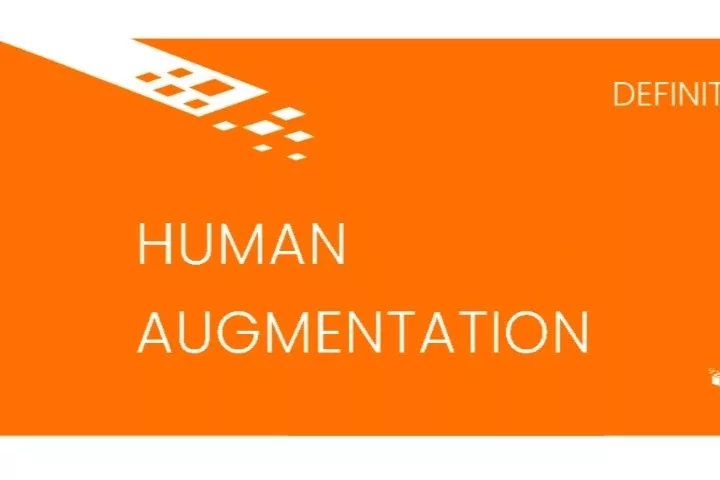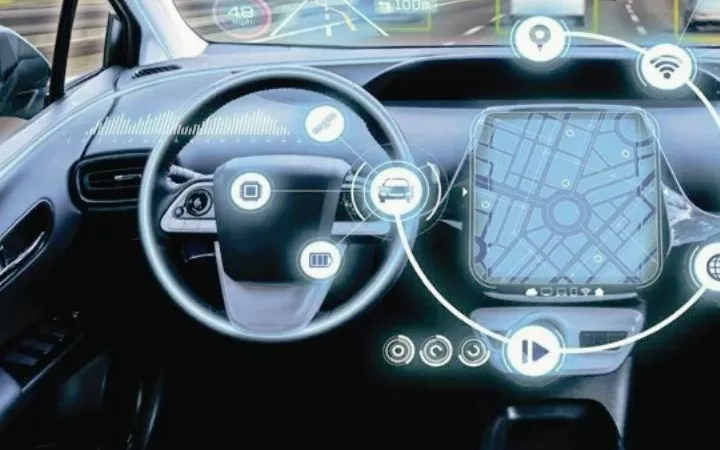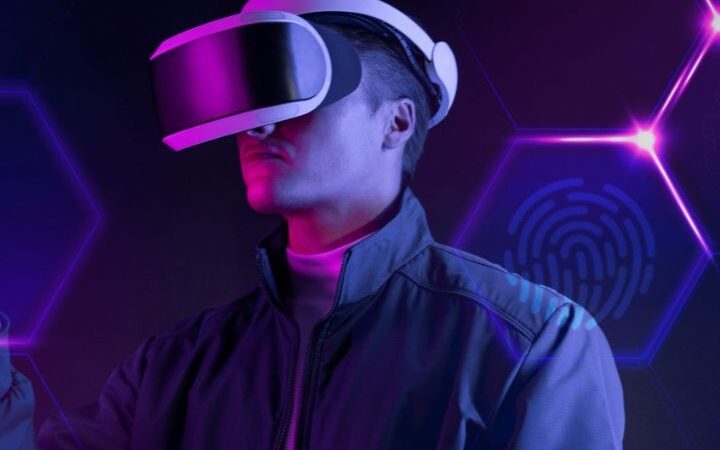What Does The Future Hold For Human Augmentation?

As new developments in human augmentation continue, new research from Kaspersky is highlighting people’s growing desire to augment or modify themselves.
Recently, Tesla and Space X entrepreneur Elon Musk unveiled a “brain chip” that will hopefully enable paralyzed people to walk and speak again. He said, “It’s a Fitbit for the skull with tiny wires.”
Many people are now aware that the futuristic augmentation of humans, which one often sees in science fiction films like Ghost In The Shell, Chappie, or Alita: Battle Angel, is approaching humanity faster.
The diverse areas of action of human augmentation
The terms “human augmentation” and “human enhancement” cannot be precisely defined because, in principle, every type of product or technology used that is intended to expand human capabilities or have a performance-enhancing effect is included.
According to Gartner’s market research company, the trend towards technical self-optimization will also be unbroken popular in 2020 -alongside other technology trends.
The proponents of human augmentation refer to these developments as anthropological constants – accordingly, humans want to optimize themselves continuously.
On the other hand, his critics downgrade the expansion or improvement of human capacities to act as a questionable manipulation of the human individual.
But – despite all generalizations – the area of application of human enhancement is extensive and ranges from simple (nowadays trendy) wearables to futuristic-looking DNA modifications.
While many technologies already exist, others are still a long way off. The currently best-known include:
- “Body hacking” implantation of microchips
- Doping for the benefit of thinking skills, fitness, and health
- Prosthetic stabilization of extremities and body functions
- Sensory expansion of hearing and vision
The technologies that are currently still in development include all computer-brain couplings, such as the groundbreaking vision of “Whole-brain emulation.”
Other pioneering approaches are so-called “genome editing” and the “3D bioprinting” based on it. It becomes clear that ways are also being sought in the area of the human genome to optimize it sustainably.
In the foreseeable future, a 3D bio-printer could help to produce individual cells or perhaps even entire human or animal tissue – and at a later point in time, perhaps whole organs as well. There seems to be no limit to technical progress in this regard.
Motives and limits of technological self-optimization
Human augmentation or human enhancement makes people healthier, more efficient, and more stress-resistant in the long term – at least, that’s what their advocates claim. Indeed, the new possibilities are fascinating.
It remains to be seen what new knowledge the next “Augmented Humans” Conference will take place in March this year in Kaiserslautern. However, indisputable is that there are many different reasons for use in human enhancement: restorative, therapeutic, and purely private.
Critical voices particularly disapprove of the medically unnecessary self-optimization. However, the transition from therapeutic to non-therapeutic technology is not infrequently fluid.
While AR and VR devices are undoubtedly playful gadgets, a fitness bracelet or a smartwatch is mutually has a health-related added value.
In addition, these new technologies make the world more accessible to everyone – not just the physically challenged.
When it comes to modern technology in companies, it is not uncommon for fears to arise about a possible Automation of workplaces. A fallacy, because after all, the new technologies can help employees in many ways.
Examples include the exoskeletons already used in many places, which support their wearers when working in uncomfortable positions or lifting heavy loads.
Generation social media
Are there reasons for this rapid paradigm shift? Experts believe that the social media and digital filters that have created most smart cameras and apps have spawned a “modification generation” that normalizes the idea of augmenting and changing our bodies.
9 out of 10 respondents expressed concern that potential boosts on their bodies could be hacked – a very likely and real scenario provided they are connected to the internet. Others suspect that these fancy new tools will only be reserved for the rich and famous.
Study on the Human Augmentation:
As part of the cooperation agreement between the Planning Office of the Bundeswehr and the Development, Concepts and Doctrine Center ( DCDC) from Great Britain, the Future Analysis unit has been working on the Strategic Implication Project (SIP) “Human Augmentation” with the DCDC since 2019. The study has now been published.
The Strategic Implication Project aims to analyze the impact of human augmentation on future defence and security. The time horizon considered is 30 years.
Human Performance Augmentation stands for the application of science and technology to temporarily or permanently improve human performance.
To develop the most comprehensive picture possible for the future, in addition to defence and security, the future perspectives in technology, society, politics, and economics were also examined and placed in a shared context. Scientists from the Finnish and Swedish Defense Research Institutes were also involved in the project.
The main results of the study on human augmentation
- Human augmentation will become increasingly relevant in the future because it is the link between the unique abilities of humans and machines. The winners of future wars will not be those with the most advanced technology but those who can most effectively integrate the unique capabilities of man and machine. The growing importance of human-machine teaming is already widely recognized, but this has so far been discussed from a technology-centric perspective. Human Augmentation represents the missing piece of the puzzle.
- Successful application of human augmentation requires a more differentiated approach to generate understanding among potential users. The essential principles must be defined to achieve this, which represent the people collectively as a platform. These are physical, psychological, and social.
- Human augmentation technologies offer a wide range of possibilities, now and in the future. There are mature technologies that could be integrated today with manageable political considerations. The most transformative technologies are currently at a relatively low maturity level, but society needs to be prepared to change.
- The ethical and legal implications of human augmentation are challenging to predict, but addressing these issues early and regularly is the core of its success. There may be an increasing moral obligation to give people access to Human Augmentation in the future, at least in cases where this leads to improved health and the general welfare.
- Human augmentation can lead to fundamentally new concepts of warfare. In the next 30 years, individual soldiers may achieve increased or more varied operational effects that affect our force structure, equipment program, and doctrine.
In summary: human enhancement
- Human enhancement involves the use of technological means to improve people. In contrast to the use of technology in healthcare, these methods are used on healthy people.
- Enhancement technologies are genetic modifications and mechanical adaptations (in the form of bionic limbs). Pharmaceutical amplifiers are currently the most widely used.
- Proponents believe that using technology to improve is something that makes us human. The opponents believe that it damages our autonomy and humanity. Our mistakes and errors make us human.
- Human enhancement has a tremendous impact on all sorts of areas, including geopolitical relationships, warfare, legislation, and sports. For this reason, it is complex to make independent assessments here as an individual or as a country.
Declaration on Human Enhancement
There are a lot of concepts and ideas around human enhancement. The basic idea is that “Human Enhancement” aims to increase human skills and functions beyond the average level. Think medicines to improve your cognition, genetic procedures to increase muscle mass, and an exoskeleton to support your stamina.
Human Enhancement Criteria
This is a list of criteria you can use to decide whether a particular method or technology is Human Enhancement :
- Healing or improvement
This is the best-known distinction within (biomedical) technology. Take the implantation of electronic devices in the human body. In the case of a pacemaker, help is provided to a patient. But if, as an individual, you are using technology to improve yourself, then that is considered an improvement.
- Individual versus collective
Is it a choice you make, or is it made for you? In the current world view, the above methods are unlikely to be imposed. Can we also consider vaccinations as a human enhancement? After all, you are born without resistance to certain viruses.
- time
In line with the previous point, our view of what is accepted may change over time. Where today we see some interventions as improvements, the news may be expected for future generations. Take coffee, for example. When this was introduced, and the first drinkers experienced the uplifting feeling, coffee was not as natural today. In the context of this time, coffee would fall under human enhancement.
- Temporary or permanent
This is the extent to which an improvement method is temporary or permanent. Imagine a vision: like an intelligent contact lens like the one currently being developed by Samsung. According to the patent application, the manufacturer wants you to take photos with the lens; the information is projected onto the screen and connected to your smartphone.
One can argue about whether or not this falls under human enhancement. According to the previous criteria, if the technology were still experimental and not yet socially accepted, it would fall under human enhancement. This is in contrast to regular glasses, contact lenses, and clothing.
A bionic eye, such as in science fiction films like Terminator, can easily be classified as human enhancement in this regard. That’s because it involves permanent enhancement with additional skills like night vision, zooming in, and taking pictures.
- Context
The context determines when something is accepted or not. The top-level sport is a fantastic testing ground through which you can think. For example, erythropoietin (EPO) promotes the growth of red blood cells from the bone marrow. It is banned in a sport like cycling, while it is sometimes used on patients who have difficulty producing red blood cells in healthcare.
- Realistic versus vision
This is the extent to which a human improvement technique or method is natural. Take the bionic eye. It is not yet part of human improvement as it is technically not yet possible.
There are undoubtedly several visions of human progress within the present movement of transhumanism that is now only fancies or is in a very primitive stage of research. If available, a technology falls under human enhancement, even if it is only intended for a limited group.






